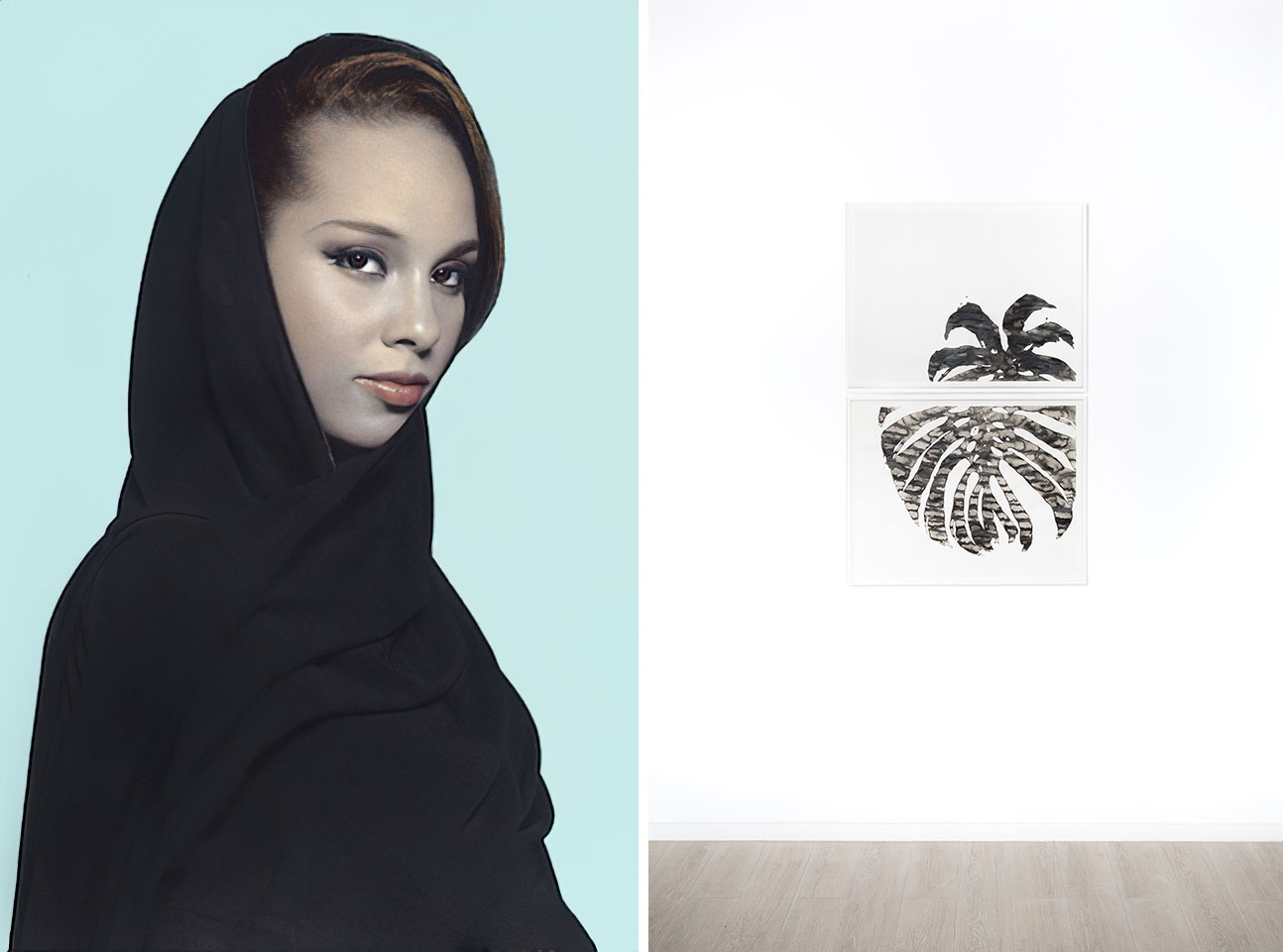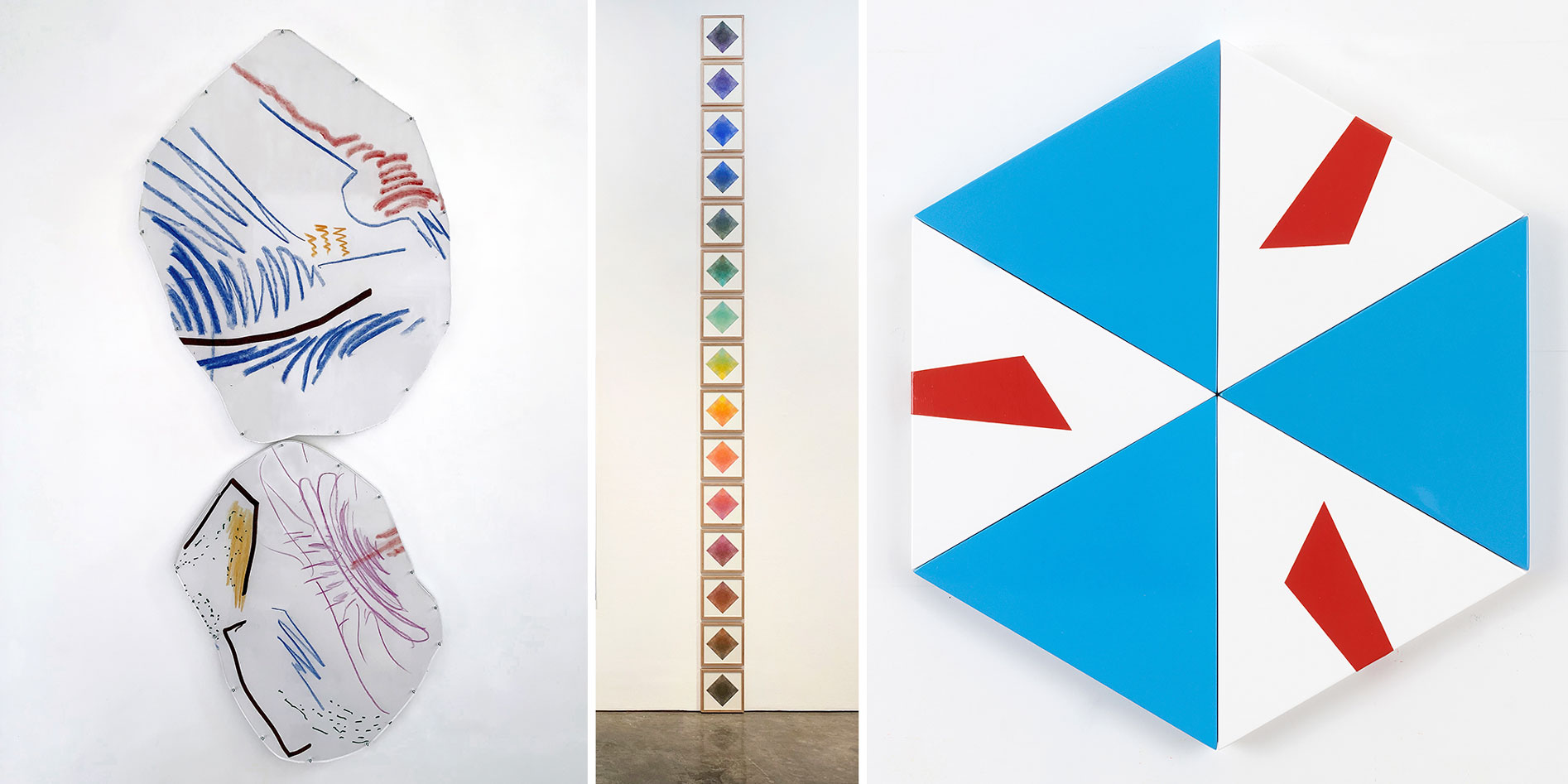ART CITIES:Dubai-There Is Fiction In The Space Between, Part II
 The exhibition “There Is Fiction In The Space Between” draws on the breadth of The Third Line Gallery program by presenting eleven pairings of artworks by twenty-two different artists. Each of these pairings tells stories of aesthetics, ideologies, irony, fables and humor, and while they may or may not have initially been intended to be shown together, their coupling creates a space between them powered only by suggestion and enables a quest into re-defining and reshaping the facts presented before their viewer.
The exhibition “There Is Fiction In The Space Between” draws on the breadth of The Third Line Gallery program by presenting eleven pairings of artworks by twenty-two different artists. Each of these pairings tells stories of aesthetics, ideologies, irony, fables and humor, and while they may or may not have initially been intended to be shown together, their coupling creates a space between them powered only by suggestion and enables a quest into re-defining and reshaping the facts presented before their viewer.
By Dimitris Lempesis
Photo: Third Line Gallery Archive
There is a sense of duality when looking at the selection of works of the exhibition “There Is Fiction In The Space Between”, which can be interpreted in a variety of ways. Whether it is seen as visual parallels or complementary concepts, the viewer is invited to bring their own fictitious narrative in connecting the duos. The role fiction plays in our conscious lives is not of empirical nature. It is not fact. But it does bear truth. It is the re-imagination or completion of facts one might see as incomplete. The imagination exists and curls between two facts and makes for infinite possibilities.
Abbas Akhavan’s practice ranges from site-specific ephemeral installations to drawing, video and performance. The domestic sphere, as a forked space between hospitality and hostility, has been an ongoing area of research in Abbas’ work.
Ala Ebtekar is an artist who works between his native San Francisco Bay Area and Tehran, Iran. Born in Berkeley, California to Iranian activist/artist/architect parents, from an early age, he developed an affinity towards various notions of in-between-ness, which has led him to explore the many spaces amongst the two cultures, both shared and separated, momentary and boundless. Such experiences have evolved into a dynamic practice that disquiets dominant notions of identity and complicates cultural difference. For the past twenty years, he has situated his art practice as a multitude of spaces between, and even abov
Amir H. Fallah’s artistic oeuvre encompasses painting, photography, sculpture, and installation combined with a visual vocabulary that includes collage and complex patterning. The works present a critical observation of the deconstruction and appropriation of portraiture in its various forms. Fallah’s practice presents an alternative perspective to entrenched art historical portraiture traditions and the dynamics of modern day art collection and art making. Intertwined with these concerns are his reflections upon identity and personal narrative.
Working in photography, video, and performance, Farah Al Qasimi examines postcolonial structures of power, gender and taste in the Gulf Arab states. She studied photography and music at Yale University in 2012 and received her MFA from the Yale School of Art in 2017. Her practice over the years has moved fluidly between private and public spaces, but the content has primarily remained focused on locating the fantastic in the everyday. She also explores how consumer culture seduces people, particularly women, with promises of beauty or self-improvement.
Living between Tehran and Paris, Farhad Moshiri has developed a personal language in which he dis- cusses commonalities in Iranian and Western cultures. Inspired by Pop art, Farhad overturns both pop culture and highbrow imagery by transforming it into figurative artwork. His pieces are made using everyday objects as well as sparkly, luxurious materials such as pearls, crystals, sequins, and gold leaf. Although his oeuvre appears as playful and decorative, beyond the shimmering surfaces Farhad casts a more cynical and often critical eye. He addresses the flaws of contemporary Iran all while toying with its traditional forms, and acknowledges the appeal of the Western world in addition to its limitations.
Fouad Elkoury has been at the forefront of photographic practices in Lebanon and the wider Middle East. In 1982, he covered the Israeli invasion of Beirut and in 1984 published “Beyrouth Aller-Retour”, a book documenting the bomb-shocked city – a prelude to his sophomore project Beirut City Centre in 1991, and ignited a distinguished bibliography, which continues to this day.
Hayv Kahraman’s practice pulls on her personal experiences of migration to Europe (and then the United States) to create paintings, drawings, objects and performances. Her work engages the viewer, utilizing elements of calligraphy, Italian Renaissance painting and illuminated Arab manuscripts to reflect on the placelessness and experience of diaspora, engaging aesthetic notions and codes of beauty to depict often psychologically brutal subjects. By developing a vocabulary of narrative and exploration the artist tries to contest and renegotiate boundaries found in the social and political third space between Western and Middle Eastern culture.
Huda Lutfi is a cultural, feminist historian by professional training whose work in the field of the visual arts translates these affiliations in multiple complex ways. In her artwork, Huda excavates and makes vocal the silenced voices and marginalized spaces that cross various historical and cultural contexts mapping, as it does the politics of her engagement both as a historian and as an artist. Cultural hybridity is Huda’s genealogy; it lies at the heart of her work enabling her to travel among and dialogue with many artistic traditions with which she shares the desire to liberate the human spirit and imaginary while tracing an inner meditative state of being
Born in Beirut, Joana Hadjithomas and Khalil Joreige have worked together as both artists and filmmakers, shooting fictions films and documentaries.
For the last 15 years, they have focused on the images, memory and history of their country, Lebanon, its wars, its conflicts, its political battles. As photographers, video and film-makers, they have presented their works in exhibitions, collections of images and films. They re-appropriate political documentation, archives, landscapes, symbolic sites to create critical images by adapting them, by making their deterioration felt and by stressing the effects of time and memory as both very personal and collective.
Jordan Nassar is a visual artist who works primarily with textiles, specializing in works inspired by traditional Palestinian embroidery. With his hand-embroidered textile pieces, he addresses the intersection of craft, language, history, (geo)politics, and technology.
Laleh Khorramian’s work takes theater and the spectacle as its point of departure, to explore aspects of human nature and emotional states of consciousness, and the possibilities of drawing as a medium. Her work combines animation and drawing in order to capture and emphasizes particular stages of the art-making process. These animations look to cinema in its juxtaposition of moving image and sounds. They look to drawing and printmaking for the possibilities of chance accidents, the manipulation of found material, and the mark of the human trace. Her experimental animations use her own monoprints and drawings as tools for storytelling.
Born in Qazvin, Iran in 1922, Monir Shahroudy Farmanfarmaian’s distinguished career has spanned more than five decades. Incorporating traditional reverse glass painting, mirror mosaics and principles of Islamic geometry with a modern sensibility, her sculptures and installations defy easy categorization.
Born in Iran Nima Nabavi is a self-taught artist who was brought up in the UAE. He received a Bachelor’s degree in Business and Entrepreneurship from the University of Southern California and a MBA from New York University. After living in the United States for twenty years, he is now based in Dubai, where he dedicates himself to a practice driven by a mathematical approach and contemplative execution of intricate geometries.
Born in Mashhad, a sacred shrine city in Iran, Pouran Jinchi became attuned early in life to the ways architecture, objects, decoration, and the written word can be imbued with symbolic power. This awareness is threaded throughout her body of work, which explores the dense intersectionality of literary and pictorial narratives.
Lodged between optical art and minimalism, Rana Begum’s works draw their inspiration from repetitive geometric patterns found within Islamic art and urban architecture. She takes her experience of the vibrant collage of the urban environment and concentrates it through a process of distillation and filtration. Her work, minimal in its formal language, imposes order and system by abstracting those moments of accidental, aesthetic wonder.
Sahand Hesamiyan’s works are primarily interactive. They are derived from Islamic architecture, and in many occasions this intense relationship goes beyond the mere reflection and repetition of the forms and influences the titles of the pieces.
Slavs and Tatars is an art collective devoted to an area East of the former Berlin Wall and West of the Great Wall of China known as Eurasia. Their practice is based on three activities: exhibitions, books and lecture-performances. With a heady mix of high and low brow humor, the artists turn to sculptures, installations, and text to excavate and explore a geography that is equally imagined as it is political.
Sophia Al Maria is an artist, writer and filmmaker. For the past few years, she has been carrying out research around the concept of Gulf Futurism. Her primary interests are around the isolation of individuals via technology and reactionary Islam, the corrosive elements of consumerism and industry, and the erasure of history and the blinding approach of a future no one is ready for.
As a Kuwaiti of Palestinian origin, much of Tarek Al-Ghoussein’s work deals with how his identity is shaped in a context of inaccessibility and loss. His work explores the boundaries between landscape photography, self-portraiture and performance art.
Youssef Nabil’s photos evoke the deliciously outmoded feel of the photo-novels that accompanied cinema at the time and highlight in each portrait the extraordinary character of his models, distinguished artists, actors, singers and friends.
Zineb Sedira’s photographs and video installation use the perspective of her own experience to frame questions about language, transmission, memory and mobility.
Participating Artists: Abbas Akhavan, Ala Ebtekar, Amir H. Fallah, Farah Al Qasimi, Farhad Moshiri, Fouad Elkoury, Hayv Kahraman, Huda Lutfi, Joana Hadjithomas and Khalil Joreige, Jordan Nassar, Laleh Khorramian, Monir Shahroudy Farmanfarmaian, Nima Nabavi, Pouran Jinchi, Rana Begum, Sahand Hesamiyan, Sara Naim, Slavs and Tatars, Sophia Al Maria, Tarek Al Ghoussein, Youssef Nabil and Zineb Sedira.
Info: Third Line Gallery, Warehouse 78 & 80 (Exit 43 off Sheikh Zayed Road), Street 8, Al Quoz 1, Alserkal Avenue, Dubai, Duration: 23/3-30/5/20, Days & Hours: Sat-Thu 10:00-19:00, www.thethirdline.com

Right: Abbas Akhavan, Untitled_2017, Ink on paper, Diptych, 50 x 65 cm each, © Abbas Akhavan, Courtesy the artist and third Line Gallery



Center: Nima Nabavi, Series 7, 2020, Archival Ink on Cotton Paper, 21.3 cm x 21.3 cm, Each Work, © Nima Nabavi, Courtesy the artist and third Line Gallery
Right: Pouran Jinchji, A as Alpha Hexagon, 2017, Enamel on MDF panels 46 x 37.5 cm, © Pouran Jinchji, Courtesy the artist and third Line Gallery


